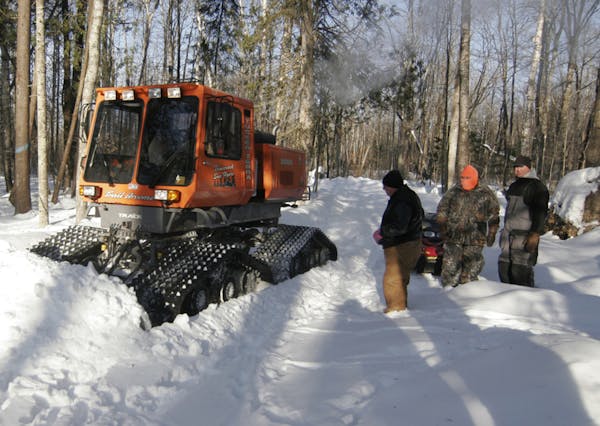WILLMAR, MINN. — Minnesota will have a new duck management plan by fall, Department of Natural Resources wildlife officials said Saturday here at the state Ducks Unlimited convention.
"It's important to remember that a plan is not an outcome," DNR Commissioner Sarah Strommen said. "We want [the new plan] to be more action oriented ... and to track the work we're doing.''
Pending the plan's development, Strommen said, the DNR has set goals that include restoration of 4,000 acres of wildlife habitat annually and management of 170,000 acres of wetlands and grasslands on state wildlife areas.
Paul Telander, the agency's wildlife section chief, said he and other state waterfowl managers will meet with conservation group leaders as early as this month to gather input for a draft plan to invigorate Minnesota duck management. The plan will be complete by the state's September duck opener, he said.
Minnesota licensed fewer duck hunters this past fall than at any time in history, a significant falloff from past decades when the state led the nation in waterfowler numbers.
Wetland and other habitat losses, particularly in the state's southern and western agriculture regions, have adversely affected duck production, while also making Minnesota less hospitable to migrators. Many remaining wetlands are severely degraded because of carp infestations, water-level fluctuations and loss of aquatic vegetation.
The habitat losses have triggered declines in hunter numbers. Additionally, Minnesota, like other states, is recruiting fewer young waterfowlers to replace aging baby boomers who have dropped out of the sport or who hunt in states or Canadian provinces where ducks are more abundant.
DNR wildlife officials produced a 50-year duck plan in 2006 that has been derided by some waterfowlers for its long time horizon and its lack of periodic progress-measurement goals.
The new duck plan will be different, Telander said.
"Our intent will be to have short-term goals and targets to shoot for,'' he said.
How the new plan's progress will be measured is unclear, Telander said. Habitat acres developed might be one metric, he said.
The number of breeding ducks returning to Minnesota in spring might be another, and/or possibly the number of ducks included in hunters' harvest.
Meanwhile, the DNR's recently developed draft goose management plan will soon be distributed to agency stakeholders for comment.

Anderson: Celebrate Earth Day by rekindling real connection to nature
Anderson: Anglers protesting tough new Mille Lacs rules are wrong

Anderson: Courts, not politicians, should rule on Red Lake, White Earth lands

Anderson: Multimillion windfall gets invasive carp deterrent moving
![A young whitetail deer searches for food as another blanket of snow coats the arrowhead. ] Minnesota -State of Wonders, Arrowhead in Winter BRIAN PETE](https://arc.stimg.co/startribunemedia/WK32UWWY6FKNWJUIYCJ6ZPT4AU.jpg?h=91&w=145&fit=crop&bg=999&crop=faces)

